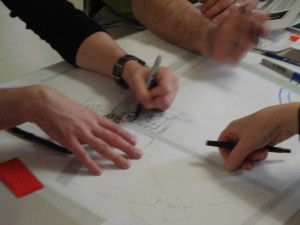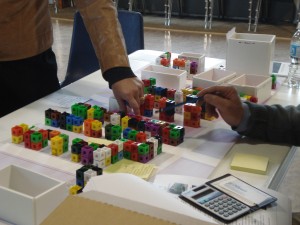How we create our cities and towns has an impact on the quality – and longevity – of our existence. While this may feel far off, irrelevant and easy to dismiss, there is a simple and familiar metaphor that highlights our individual and collective situation: it’s our bed, we have to lay in it.
Two examples from headlines one October day in 2009 in the Edmonton Journal:
- Cities tapping out our rivers, report warns: tampering with flow regimes has put ecosystems at risk; and
- Proximity to quality transit, parks may cut diabetes risk: healthy neighbourhoods are 38% less likely to develop disease.
People need to water to survive, let alone be healthy and thrive. Further, “people who live in neighbourhoods with safe sidewalks, ample parks, good public transportation and ready access to fresh fruits and vegetables are 38 per cent less likely to develop diabetes.” The point: as we create our cities and towns, we make decisions everywhere, big and small, that have an impact on our well-being. We decide whether we wish to have a habitat that supports our well-being. We decide whether or not we wish to make it easy or hard for people to exercise and eat right. We decide whether we care or not if collectively we look after the places and people we live in and with, and rely upon.
I am not in support of or in opposition to the arguments in these pieces of journalism. Rather, my intention is to highlight the often unconsidered consequences of our choices as we create and recreate our cities, towns and communities. In choosing to leave with each other we have made implicit commitments to each other. In choosing to create and live in larger and larger settlements (and even the small ones), we specialize what we do for each other and we advance what we are capable of. We are growing and evolving as a species. Because of this specialization, we have made great advancements in health care, in communication technologies. None of this would have happened without the creation of cities. We live together so we can grow and evolve as individuals and together.
Yet these articles point to a bit of a conundrum: what if the choices we are making in how we create our cities is undermining our very evolution? What if we harm our ecosystem to a degree where our existence is threatened? What if we design our cities to ensure people are nowhere near as healthy as they could be? Is the purpose of a city to harm humans or to support humans’ growth and evolution? Which purpose do the choices we make as citizens, community organizations, NGOs, businesses, developers and builders, and public institutions serve?
http://www2.canada.com/edmontonjournal/news/story.html?id=889ee604-8995-4a37-8866-82bd46bf46d3
http://www2.canada.com/edmontonjournal/news/story.html?id=102f7e5f-9e08-447b-aa45-1a197de47812

